When you read the phrase “Menu Planning,” do you immediately think “I can’t possibly take on another part-time job right now?” Me too. That’s why I’ve decided to break down the basics of menu planning. As with anything, long-lasting sustainable change happens slowly, one simple step at a time. Hopefully with these tips and some practice, planning your own meals will be another healthy skill that you can do without even thinking about it.
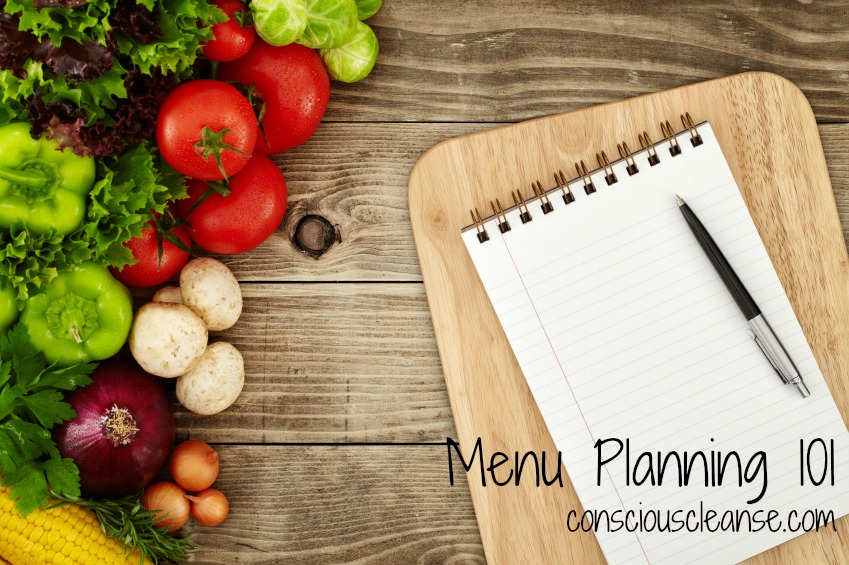 If this is your first time embarking on the Conscious Cleanse you may be feeling a bit overwhelmed with all the new foods to explore. Or perhaps the food combining principles are a completely foreign concept to you. Maybe you’re a seasoned pro at green smoothies and marinated veggies.
If this is your first time embarking on the Conscious Cleanse you may be feeling a bit overwhelmed with all the new foods to explore. Or perhaps the food combining principles are a completely foreign concept to you. Maybe you’re a seasoned pro at green smoothies and marinated veggies.
Speaking of being a seasoned pro, did you know that you could cleanse with us again anytime for just $99?
No matter how comfortable you are in your Cleanse kitchen, knowing how to plan your meals is an important skill to cultivate.
We highly recommend having a game plan in place before you start the Cleanse because it will give you a solid foundation for the entire process. Even when not officially “on the Cleanse,” I know that menu planning saves me time, frustration, and probably some money too.
Are you ready to make your menu plan for the week?
It all starts with the basics. Below are my five easy tips, for beginners and more savvy home chefs alike, on how to create tasty and cleanse-approved menus – week after week. Embrace these simple steps and you’ll be building a strong foundation of healthy habits in less time than it takes to throw away all those uneaten leftovers.
Here’s to never tossing out another wilted bag of greens again!
Are these tips helpful? Be sure to leave me a comment below.
With love and big menu plans,
Menu Planning 101
Plan for the week
Just as recipes don’t make themselves, ingredients won’t magically appear in your pantry, nor will grocery stores come to you unless you’re lucky enough to live in a grocery delivery area (check out our partnership with Door to Door Organics and enter “detoxdelivered” for $10 off your first order). Start by carving out at least one hour of your week for compiling your grocery list. Schedule another hour or two for your big shopping trips. Seriously put it into your calendar like it’s your job and you’ll be one step ahead.
Write it out
There are many online tools that can help you organize a weekly menu, but I’ve found that good ole fashion pen and paper work the best. Simply write out the days of the week down one side of the paper, with breakfast, lunch, dinner and snack across the top. For my grocery lists, I like to use the Reminders app on my iPhone. I have separate lists for the different grocery stores that I frequent (ie-Whole Foods, King Soopers, Costco, etc). The best part about this digital method is that the lists are “shareable” so that the other shoppers in your household can have access to the same list. Love that!
Split your trips
While I recommend planning by the week, I also prefer to do one big grocery run on the weekend, and then another smaller run mid-week. I’ve found that planning on two trips to the store each week not only ensures fresher ingredients but it’s also less stressful. If I happen to forget something on my list, I know I’ll be shopping again in a few days so I can pick it up then. Aim to buy all your non-perishables in one big trip and divide the purchase of fresh produce based on when you’re going to eat it. This way your greens and cucumbers won’t get all mushy by the time you get to them.
Start with what you know
When you look at your menu, you should feel excited but not overwhelmed. The best way to make sure you’ll stick to your plan is to pencil in dishes that you already know and like. If Conscious Cleanse foods are new to you, take a few moments to flip through the recipes in the book and online. Look for things that look yummy and familiar. Are you a Chinese food take-out junkie? Check out our Veggie “Fried” Brown Rice on page 278 in the book. Are tortillas a staple food in your house? Notice that a crisp piece of romaine lettuce or a hearty collard green leaf can work just as well to hold Cleanse-friendly fillings together. Remember, there’s nothing wrong with eating the same basic dinner a few times a week either if it helps you build up a healthy repertoire. Think simple, like quinoa and steamed veggies.
Try new things…gradually
While some of us could eat the same thing day after day, forever, many of us enjoy variety in our kitchens. A brand new recipe, however, usually takes extra time because we’re constantly referring to the website or cookbook to guide us. A surefire way to fall off course in your menu planning is to go too new, too soon! Begin by adding only one or two new dishes into your weekly meal rotation. Make sure to schedule these recipes for days or nights when you have a bit extra time, like on a day off or weekend. Fill most of your menu with easy, quick dishes like our Super Sexy Cod or our all-time cleanser favorite, Curried Carrot Soup.
Consider leftovers an ingredient
You’ll be pleased to learn that an effective weekly menu does NOT require seven days of separate recipes for breakfast, lunch, and dinner. Knowing there will be leftovers, we like to plan them into our menu too. Veggie sides and salads, like our abundant Summer Coleslaw can often double as a juicy topper to a bison burger or a piece of wild salmon. Dips and sauces, like Simple Basil Pesto, can be saved to smear on top of basic chicken breast or added to a bowl of steamed veggies for flavor. So take a look in your leftover and try thinking of ways to repurpose them with any remaining fresh ingredients. Thinking in these terms gets easier with practice but if you get stumped throw it into a Raw Rainbow Salad.
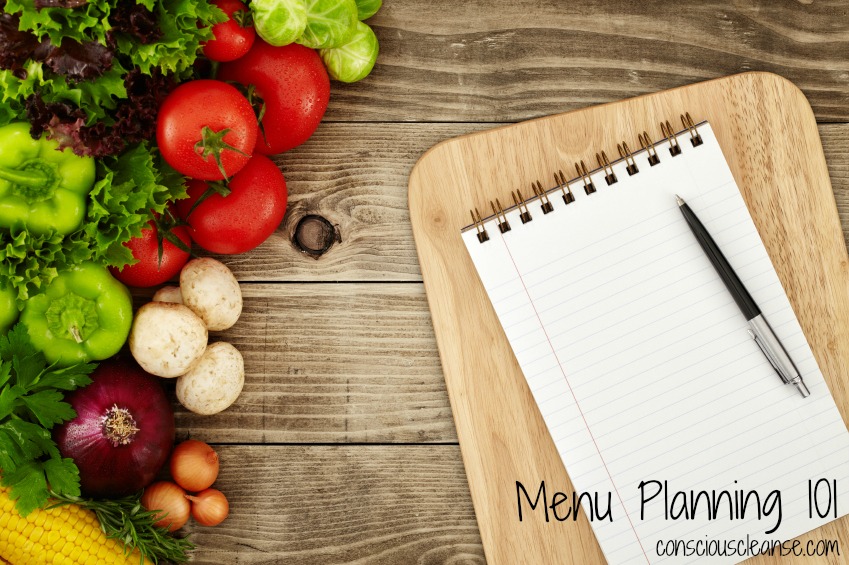

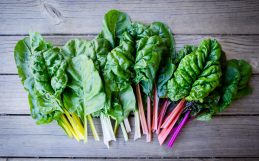

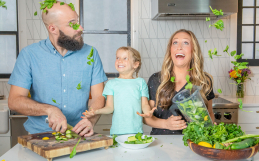

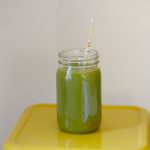

Thanks, Jules! These are some great tips! I also find it helps to make shopping lists with categories that correspond with store sections to minimize the chance that I cross the store a bunch for items. So by each ingredient/item, I put a number and circle it. For me, 1 is produce, 2 is the butcher, 3 is anything found in a middle aisle, 4 is frozen, 5 is deli and 6 is the bakery. When I’m in the produce section of the store, all I have to look for are items with a 1 next to them. When I add the item to my cart, I fill in the circle, standardized-test style. Then it’s easy to spot what’s still yet to get. When all the items in produce are in my cart, I move on to the next number until all the circles are filled.
I love your tips, Mia! Thank you for sharing with everyone! Such a good idea!
That was great advice. Cut down shopping time so I can give more attention and detail to my putting meals together. I get overwhelmed with lists. Any ideas on how to keep it simple, especially having to do it bi-weekly?
Hi Susan, Be sure to load up on veggies that keep longer in the fridge. Things like cabbage, broccoli, cauliflower, all have a longer life span. You can also freeze a pre-chopped veggie stir fry grab bag and then have for later in the week. Hope that helps some.
You guys might want to re-write this article since Door to Door no longer exists. PlanToEat is a wonderful online planning source when you’re done planning it creates a shopping list, by isle based on the ingredients in your recipes/menu.
Hi Jen, Thank you! We love Plan To Eat as well. You may want to check out our new Conscious Cleanse OnDemand releasing later this spring, it too will have a menu planning option. XO, J&J